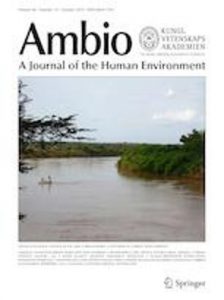Browning of freshwaters: Consequences to ecosystem …
Browning of freshwaters: Consequences to ecosystem services, underlying drivers, and potential mitigation measures

Ambio (2019) pp 1-16.. https://doi.org/10.1007/s13280-019-01227-5.
Authors
Emma S. Kritzberg, Eliza Maher Hasselquist, Martin Škerlep, Stefan Löfgren, Olle Olsson, Johanna Stadmark, Salar Valinia, Lars-Anders Hansson, Hjalmar Laudon
First Online: 31 July 2019
Abstract
Browning of surface waters, as a result of increasing dissolved organic carbon and iron concentrations, is a widespread phenomenon with implications to the structure and function of aquatic ecosystems. In this article, we provide an overview of the consequences of browning in relation to ecosystem services, outline what the underlying drivers and mechanisms of browning are, and specifically focus on exploring potential mitigation measures to locally counteract browning. These topical concepts are discussed with a focus on Scandinavia, but are of relevance also to other regions. Browning is of environmental concern as it leads to, e.g., increasing costs and risks for drinking water production, and reduced fish production in lakes by limiting light penetration. While climate change, recovery from acidification, and land-use change are all likely factors contributing to the observed browning, managing the land use in the hydrologically connected parts of the landscape may be the most feasible way to counteract browning of natural waters.